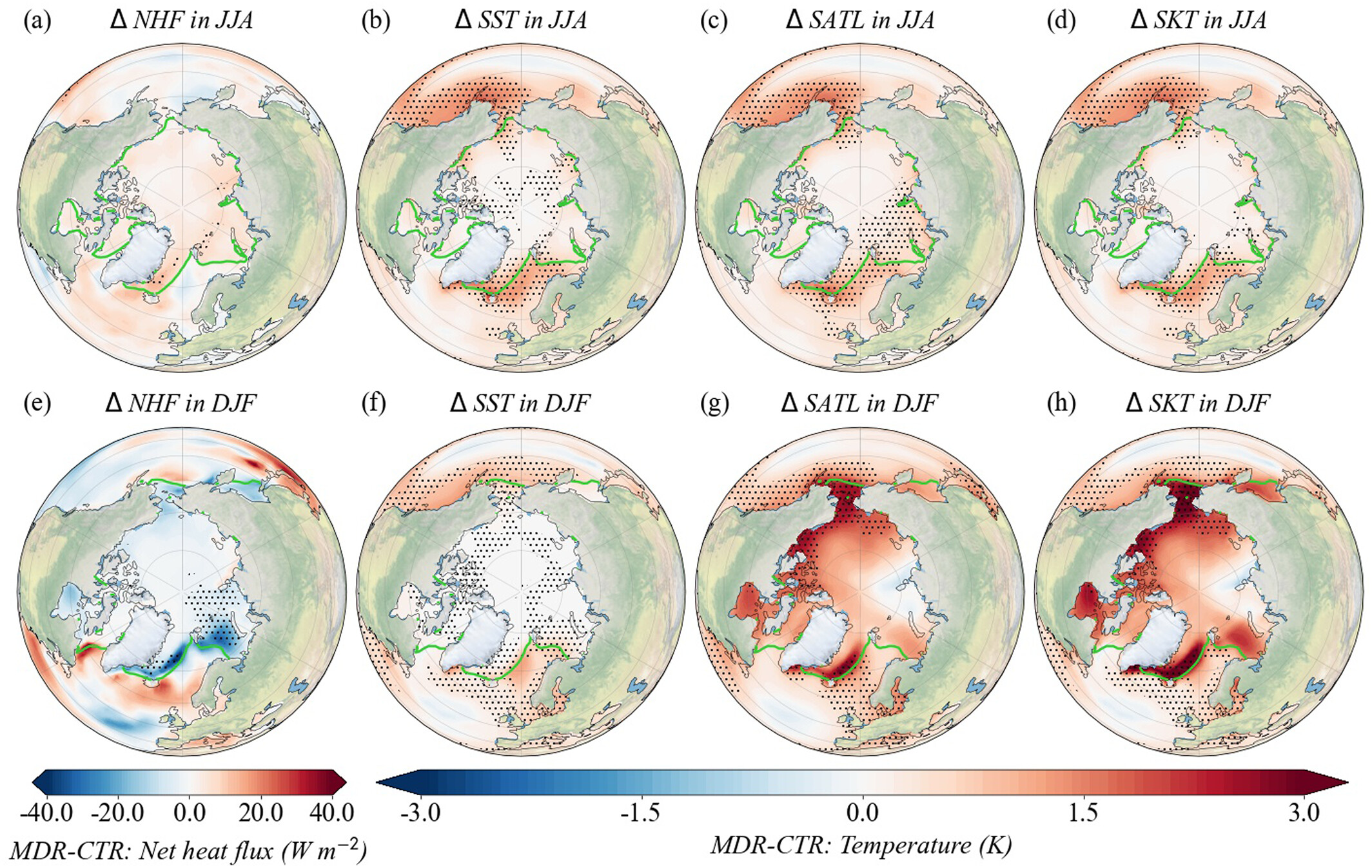Sensitivity of Arctic Surface Temperature to Including a Comprehensive Ocean Interior Reflectance to the Ocean Surface Albedo

Ocean interior reflections. Photo by Silas Baisch on Unsplash.
The inclusion of a comprehensive ocean interior reflectance improved ocean surface albedo parameterization.
The Science
The penetrated sunlight across the ocean surface is attenuated through the light absorption and scattering processes associated with oceanic optical constituents. The ocean attenuation of sunlight not only modifies the amount of solar energy reflected back to the atmosphere but also warms the seawater. Many climate models neglect the contribution of ocean interior reflectance to the ocean surface albedo (OSA) and hence simulate less accurate net heat flux through the air-sea interface. In this study, the sensitivity of arctic surface temperature to including a comprehensive ocean interior reflectance to the OSA was assessed using the fully coupled Community Earth System Model version 2 (CESM2).
The Impact
The findings reveal that ocean interior reflectance increases absorbed solar radiation and warms the ocean, enhancing seasonal heat storage and release across the Arctic Ocean and increasing sea ice reduction and positive climate feedback that elevates Arctic surface temperature. Significant effects of ocean interior reflectance on the Arctic Ocean, including sea surface warming and sea ice reduction, justify the importance of ocean interior reflectance in climate models to better understand ongoing Arctic climate changes. The inclusion of a comprehensive ocean interior reflectance improved ocean surface albedo parameterization. The ocean surface albedo parameterization scheme developed here can be incorporated into other earth system models such as E3SM as well.

Figure 1. 30-year mean modified (MDR) minus control run (CTR) differences for JJA (Jun, Jul, Aug) and DJF (Dec, Jan, Feb) for (a,e) net heat flux (NHF), (b,f) mean sea surface temperature (SST), (c,g) mean surface air temperature (SATL), (d,h) mean skin temperature (SKT). Negative (positive) values denote increased (decreased) fluxes from the surface into the atmosphere. Differences significant at the 95% level are stippled. Green lines mark the sea ice edges in the CTR. Note: SATL is the surface air temperature in the lowest atmospheric model output level. SKT is the skin temperature of any surface, e.g., water, sea ice, or snow surface. CTR: control run excluding ocean interior reflectance. MDR: modified run including ocean interior reflectance.
Summary
This study performed sensitivity simulations with (Modified Run, marked as MDR) and without (Control Run, CTR) ocean interior reflectance in the OSA calculation, respectively (Fig. 1). When ocean interior reflectance is included, the Arctic surface shows warming in both summer and winter, and the warming is stronger in winter due to complex feedback mechanisms in the fully coupled model. Seasonal variations in air-surface temperature differences induce changes in turbulent heat flux patterns, concurrently modifying dynamic advection and moisture processes that affect boundary layer humidity and low clouds, especially in winter. Based on partitioning physical processes in the thermodynamic energy equation, surface air warming is induced primarily through positive heating anomalies of vertical advection, latent heat release, and longwave radiative forcing. Examining the surface energy budget reveals that skin temperature warming is driven predominantly by increased downward longwave radiation, positive surface albedo feedback in summer, and increased conductive heat transport from the ocean particularly in winter.
Publication
- Wei, J., Ren, T., Yang, P., DiMarco, S. F., & Huang, X. (2023b). Sensitivity of Arctic surface temperature to including a comprehensive ocean interior reflectance to the ocean surface albedo within the fully coupled CESM2. JAMES, https://doi.org/10.1029/2023MS003702.
Funding
- This work was partly supported by the Earth System Model Development program area of the Department of Energy, Office of Science, Biological and Environmental Research program.
Contact
- Xianglei Huang, Texas A&M University
- Jian Wei, Texas A&M University
This article is a part of the E3SM “Floating Points” Newsletter, to read the full Newsletter check:


